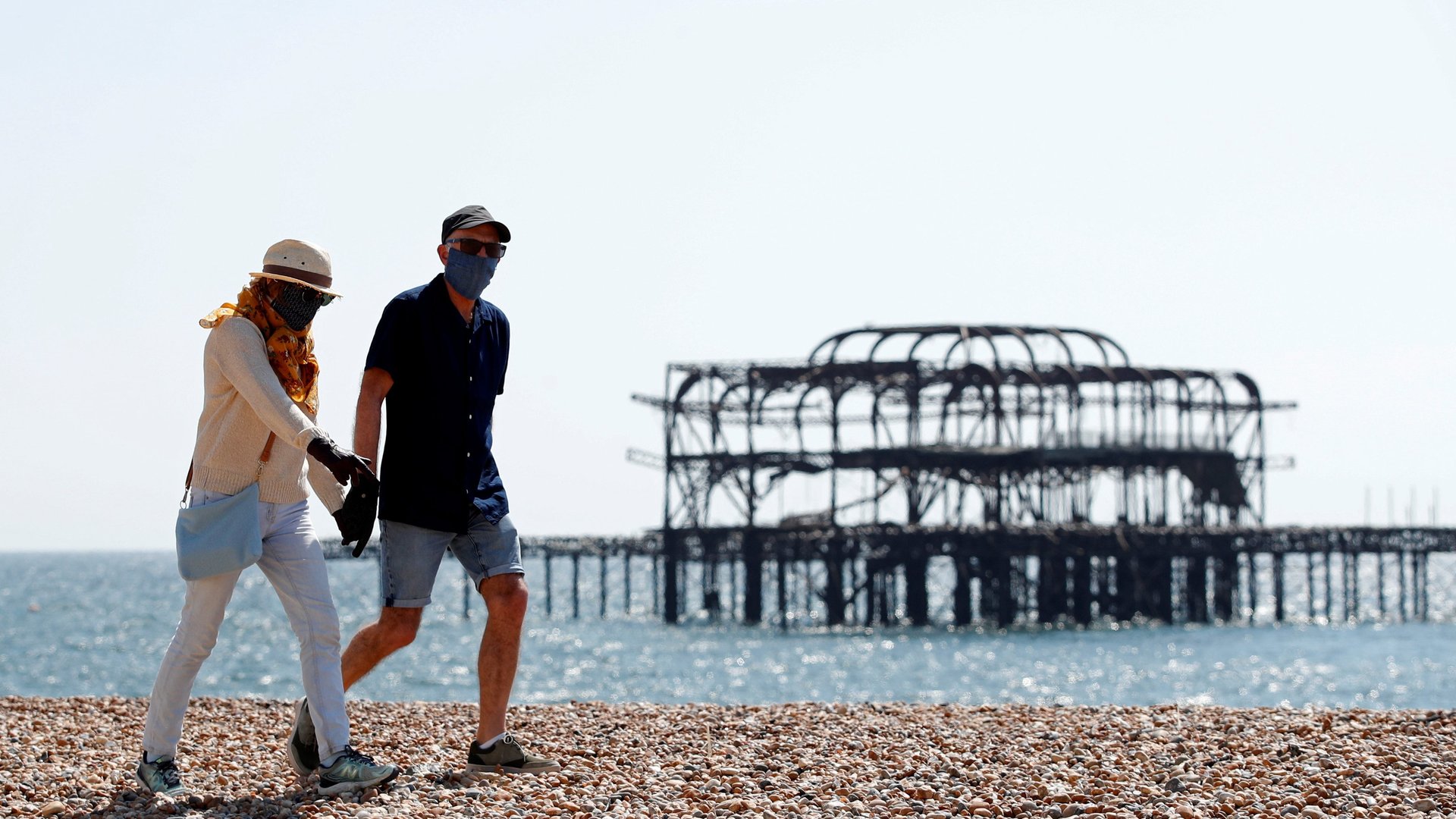Adding a layer of nylon stocking could make DIY coronavirus masks more protective
The homemade masks that millions are wearing in the US and elsewhere have always been a better-than-nothing solution for preventing the spread of the virus that causes Covid-19.


The homemade masks that millions are wearing in the US and elsewhere have always been a better-than-nothing solution for preventing the spread of the virus that causes Covid-19.
They’re not recommended to protect the wearer. Only N95 respirators can effectively block contaminated droplets and aerosols expelled from someone who is infected. Since such masks are in short supply, health officials have said that they should be reserved for healthcare workers tending to Covid-19 patients.
For the rest of us, cloth masks made from t-shirts, bandanas, bras, or jeans are sufficient, and mandatory in some states, not for the sake of the people wearing them, but everyone else. Cloth masks reduce the likelihood that an asymptomatic person who has Covid-19 unwittingly infects others.
But a new study suggests adding a layer of nylon stocking could make even DIY masks far more useful as defensive barriers, too, NPR reports. That’s because the sheer stockings cover, made from regular pantyhose, can help keep the mask well sealed.
Researchers at Northeastern University made their findings public this week, even though their work has yet to be peer-reviewed. NPR writes that it “was posted Wednesday on the scientific preprint site medRxiv and on the university’s website in the interest of sharing information quickly in the midst of a pandemic.” The news station also spoke to scientists who “praised” the work as very needed.
Tests showed that the nylon overlayer—created by cutting the leg out of sheer tights and pulling that ring of fabric over one’s head—improved the performance of typical homemade cloth masks and 3M surgical masks, which are made from non-woven polymer fibers. The stocking and surgical mask together intercepted 90% of small particles. Without the nylon, that success rate was only 75%. (An N95 mask can block 95% of small particles when it’s well sealed to someone’s face.) And cloth masks that were found to offer very little protection alone were sometimes as useful or even more filtering than surgical masks when the nylon was introduced.
Ben Cowling, a professor of infectious disease epidemiology at the University of Hong Kong who has studied face masks, told NPR that the study was “important” because it offered information for improving basic face coverings. “If we can upgrade [cloth masks] with nylon wrapping around the outside or some other special components, then perhaps we can get a cloth mask which is just as good or even better than a surgical mask,” he said.
Another study, by researchers at the University of Chicago and just published in the American Chemical Society’s ACS Nano, experimented with double-layered masks that offered both mechanical and electro-static filtration.
It found:
One layer of a tightly woven cotton sheet combined with two layers of polyester-spandex chiffon—a sheer fabric often used in evening gowns— filtered out the most aerosol particles (80-99%, depending on particle size), with performance close to that of an N95 mask material. Substituting the chiffon with natural silk or flannel, or simply using a cotton quilt with cotton-polyester batting, produced similar results.
However, the authors of that paper also called attention to the crucial importance of fit, pointing out that a 1% gap in coverage cut a double-layered mask’s filtering efficiency in half, sometimes more.